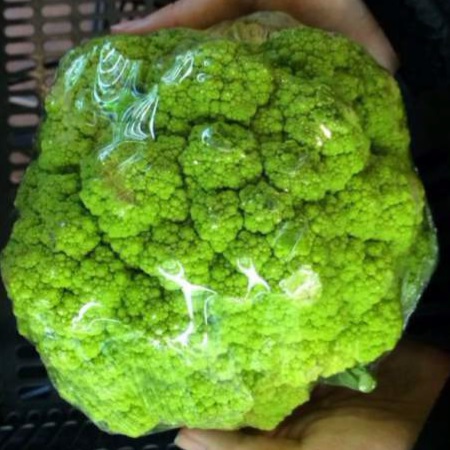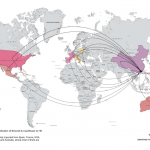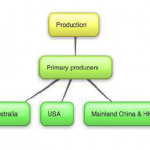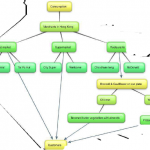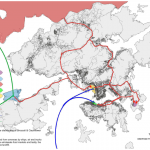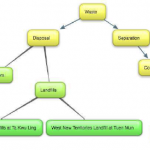Production
Broccoli and cauliflower grown in cool weather that grow poorly in summer. The optimum condition for growth is temperature around 40°F for broccoli and 65-70°F for cauliflower(Delahaut and Newenhouse, 1997). Farmers usually cut the head about an inch from the tip for promoting growth. They should be harvested before the flowers on the head bloom bright yellow which is its sign of “aging”. (Liptay, Albert, 1988). There are mainly three types of broccoli:
Three common types of cauliflower :
1. White cauliflower
2. Orange cauliflower
3. Green cauliflower
Most of them are F1 hybrids which grows big and more heads i.e. two to three in one broccoli. Green Comet is a common method for farmer to second harvest. Cultivars with excess moisture accumulation would reduced the chances of bacterial growth.
Distribution
Hong Kong fruit importers place orders with exporters abroad. Most wholesalers operate on a commission (consignment) basis with importers and distribute fruits to retailers, also on commission. To meet rising demand in Hong Kong, China and other Asian countries, some wholesalers have begun importing directly from foreign packing houses.
Due to limited land resources and having a population of 7.2 million, Hong Kong relies on imports for over 95% of it food supply. According to the latest statistics (for 2011) of the Agricultural Fisheries and Conservation Department, the local agricultural industry produced US$95 million worth of products. It is comprised of US$31 million in crop production (mainly vegetables), US$36 million in livestock production, and US$28 million in poultry production. Local production accounted for 2.3 percent of fresh vegetables, 57 percent of live poultry and 7 percent of live pigs consumed in the territory. Due to its central location, free port status and position as a regional purchasing and distribution center, a significant amount of Hong Kong imports are re-exported.
Food Retail
In Hong Kong and other Chinese cultures throughout Asia, consumers used to purchase vegetables, fruits and other fresh foods from “wet” markets – traditional street markets. However, the purchasing habits of the consumers have been changing a lot in the recent years due to the evolution of the roles of supermarkets in selling more fresh products. The younger generations are more keen to do the one-stop-shopping in supermarkets than in street markets.
Wholesale Food Markets
In Hong Kong there are fresh food wholesale markets operated by Government or private entities to provide trading facilities to fresh food wholesalers and buyers, and to assist the marketing and distribution of fresh food produce to retail outlets.
Vegetable Wholesale Market
There are altogether 4 vegetable wholesale markets in Hong Kong, and the one with the longest history and the largest transaction volume (45% of the total vegetable wholesale transactions) is located in Cheung Sha Wan in Kowloon operated by
Wastes
As broccoli and cauliflower waste will not be treated separately from other fruits and vegetables, general methods will be focused here. From the below pie, food waste contributes the majority of putrescible waste. Food waste can be any waste, whether raw, cooked, edible and associated with inedible parts generated during food production, distribution, storage, meal prepar
A three-step strategy – separation, collection and recycling is planned by Hong Kong government.
Separate food waste from others, collect them mainly from restaurants and household and recycle them. Ideally, the recycled food waste can be used as biodiesel and fertilisers. Also, the investigation of treating food wastes are highly supported by government, e.g. increasing food wastes bioenergy by
anaerobic reaction and developing techniques for reducing the odour and
Leung Hoi Shan Dreamy
Wong Tin Ting Tinnie
Chan Lok Hang Henry

